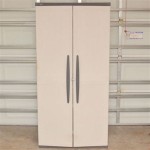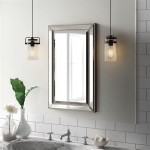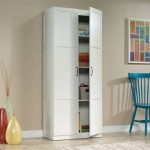Hon File Cabinet Lock Keys: A Comprehensive Guide
Hon file cabinets are a staple in many offices, providing secure storage for important documents. A crucial component of this security is the locking mechanism, and understanding how to manage Hon file cabinet lock keys is essential for maintaining organization and control over sensitive information.
Key Points about Hon File Cabinet Lock Keys
- Importance of key management
- Types of Hon file cabinet locks
- Obtaining replacement keys
- Re-keying a Hon file cabinet
- Maintaining and troubleshooting lock issues
Effective key management practices are vital for any organization utilizing locking file cabinets. Misplaced or lost keys can compromise security, leading to potential breaches of confidential information. Implementing a clear system for tracking and storing keys can significantly reduce the risk of unauthorized access.
Best Practices for Hon File Cabinet Key Management
- Assign responsibility for key control to a designated individual.
- Maintain a detailed log of key assignments, including key numbers and user information.
- Store keys securely in a designated location, such as a key cabinet or safe.
- Conduct regular audits of key assignments and inventory.
- Implement clear procedures for reporting lost or stolen keys.
Hon file cabinets utilize various locking mechanisms, each with its specific key type. Understanding these differences is crucial when ordering replacements or addressing lock-related issues. Common lock types include core removable locks, wafer locks, and tubular locks. Each type has its own security level and method for key duplication.
Understanding Hon File Cabinet Lock Types
- Core Removable Locks: Offer a higher level of security and allow for easy re-keying without replacing the entire lock.
- Wafer Locks: A more economical option, but generally offer less security compared to core removable locks.
- Tubular Locks: Often found on smaller cabinets or drawers and utilize a cylindrical key.
Losing a Hon file cabinet key can be disruptive. Fortunately, there are several ways to obtain replacements. The first step is to identify the lock's key number. This number is usually stamped on the face of the lock or on the original key. Once identified, replacement keys can be ordered through authorized Hon dealers, locksmiths, or online retailers.
Obtaining Replacement Hon File Cabinet Keys
- Locate the key number on the lock or original key.
- Contact an authorized Hon dealer or locksmith.
- Provide the key number and cabinet model information.
- Verify the key's compatibility with the specific lock.
Re-keying a Hon file cabinet involves changing the lock's internal mechanism so that it accepts a new key. This is often a more cost-effective and efficient solution than replacing the entire lock. Re-keying is particularly beneficial when keys are lost or when multiple cabinets need to be keyed alike for easier access.
Re-keying a Hon File Cabinet
- Consult with a qualified locksmith or Hon technician.
- Provide the necessary lock information and desired key configuration.
- Ensure the re-keying process is performed correctly to maintain lock integrity.
Maintaining Hon file cabinet locks is crucial for their longevity and smooth operation. Regular lubrication can prevent sticking or jamming. Additionally, addressing minor issues promptly can prevent more significant problems down the line. Troubleshooting common lock problems, such as a jammed key or a malfunctioning latch, can often be resolved with simple solutions.
Maintaining and Troubleshooting Hon File Cabinet Locks
- Periodically lubricate the lock mechanism with graphite or a dry lubricant.
- Inspect the lock for signs of wear or damage.
- If a key is jammed, do not force it. Try using pliers to gently wiggle it free.
- If the latch is malfunctioning, check for obstructions or misalignment.
- For persistent issues, consult a locksmith or Hon technician.
Proper handling and storage of Hon file cabinet keys are essential for maintaining security and preventing damage. Keys should be kept clean and dry to avoid corrosion. Avoid excessive force when inserting or turning keys, as this can damage the lock mechanism. Implementing these practices contributes to the overall longevity and effectiveness of the locking system.
Proper Handling of Hon File Cabinet Keys
- Store keys in a dry, secure location.
- Avoid exposing keys to excessive moisture or extreme temperatures.
- Handle keys with care, avoiding bending or dropping them.
- Insert and turn keys smoothly, avoiding excessive force.

Hon F24 Or F28 2185 Replacement Filing Cabinet Lock Kit Kd

Hon Hg Series Filing Cabinet Keys

Hon F26 2190 Replacement Filing Cabinet Lock Kit Ka7

Hon F26 File Cabinet Lock Kit Old Oval Push In Style Easykeys Com

Replacement Hon File Cabinet Key Gg110

Hon 2188 Lateral Replacement Filing Cabinet Lock Kit Ka9

Hon 101 225 Series Filing Cabinet Keys Phox Locks

Hon F24 F28 Vertical File Cabinet Lock Kits

Hon 136e Replacement Key 101e 225e Lock Series Easykeys Com Easykeyssite

Hon F26 Vertical File Cabinet Lock Kit Install
See Also








